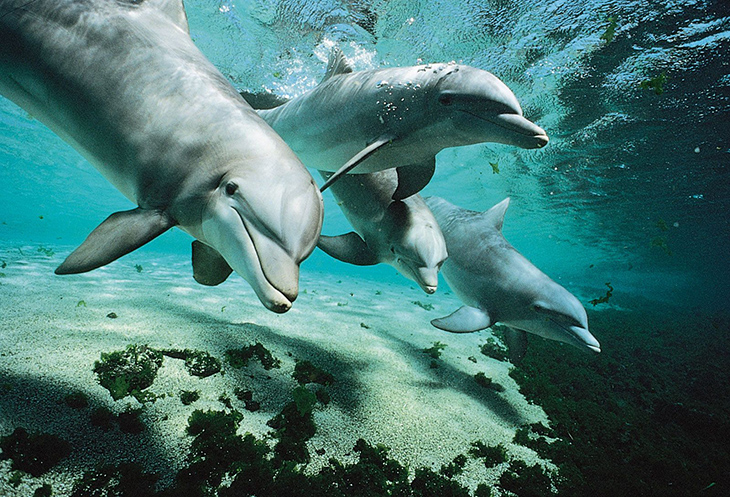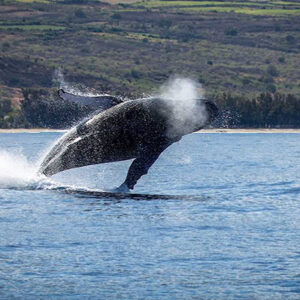
Scientists say that dolphins are extremely intelligent. They’re highly trainable and have a unique way of interacting with humans. But they also have something that sets them apart from the rest of the animal kingdom – the ability to engage in social media.
This may sound too far-fetched, but experts have seen how dolphins are actually quite adept at interaction. They form bonds and relationships with other dolphins that are unique only to their species, and that’s something worth noting.
Male dolphins have been known to boost their social lives. They do this by whistling to each other even at a distance. This was stated in a new research that delved deeper into the daily activities of dolphins. What happens is that these creatures emit high pitched sounds. The purpose of this is to tell others that they are in the area and that they would like to make contact. The sounds they make help these marine mammals maintain vital ties to the community they’re in, say scientists. In fact, this may be an extremely rare kind of social organization happening in the animal kingdom.
Science.org reports on this fact. The researchers who have observed them say that this male bonding activity comes with an enormous evolutionary payoff: dolphins with the strongest buddy bonds actually have more offspring they become fathers to.
“It’s a great study,” said Frans de Waal. He’s an emeritus primatologist at Emory University. “A lone male stands no chance in this system,” he added.
“The study shows that male competition is not only about strength or body size—the male characteristics traditionally thought to underlie reproductive success,” Samuni explained. “By forming strong alliances with others, males can influence their own reproductive success in a way that wouldn’t be possible as single individuals.”
So, how exactly do male dolphins make and retain friends to begin with? “By spending time together — petting, rubbing, touching flippers, goosing each other, making synchronous dives, having sex,” said Emma Chereskin. She’s a cetacean ethologist at the University of Bristol. Vocal exchanges also belong to the list they made. This was also according to a second new study, which she led as well.
The researchers collected and compared the genetic data collected from these males. An evolutionary biologist at the University of New South Wales, Sydney, observed that the male dolphins who had the strongest social bonds and were friends with every single member of their alliance had the most children.
Chereskin also added, “As the number of close social relationships increases, so too do the demands on the time and space available for relationship maintenance through physical contact.”
“We wanted to know how they maintained multiple alliance relationships in large groups,” she said. The language they use has evolved to support long-distance social bonding. Moreover, dolphins are also reputed to make use of physical contact. An examples would be gentle petting so that they are able to connect with strongly-bonded friends.
The international team that looked into this research had analyzed nine years’ worth of data from a dolphin population found in Shark Bay, Western Australia. The findings they had made are published in Current Biology. The details they have divulged bring forward a new light on how they reinforced and maintained valuable alliances, and these alliances have also been known to last for decades
In order to come up with these conclusions, Ms. Chereskin and her colleague had tracked groups of affiliated males. They then documented their physical and acoustic behavior. This type of behavior allowed the researchers to identify the different ways the dolphins bonded with each other and formed such concepts like ‘team membership’.
Senior author Dr Stephanie King, also from Bristol, shared, “We found within the core dolphin alliances, strongly bonded allies engaged in more affiliative contact behavior, such as petting and rubbing, while weakly bonded allies engaged in more whistle exchanges. This illustrates these weaker, but still key, social relationships can be maintained with vocal exchanges.”
“Our findings provide new evidence that vocal exchanges can serve a bonding function,” said Chereskin.
“But more importantly, vocal exchanges can function as a replacement of physical bonding, allowing allied male dolphins to ‘bond-at-a-distance’.”
Bottlenose dolphins are known to Inhabit seas all over the world. They’re most reputable for their intelligence and mimicry. In fact, in some areas, they have been known to cooperate with local fishermen by driving fish into their nets and eating the ones that have managed to escape through the spaces.
Dolphins also have a sharp vision but use echolocation to explore and search out for prey when the ocean’s visibility limits their movements. Another way they communicate is through pulsed sounds, clicks, and body language.
What are your thoughts? Please comment below and share this news!
True Activist / Report a typo


